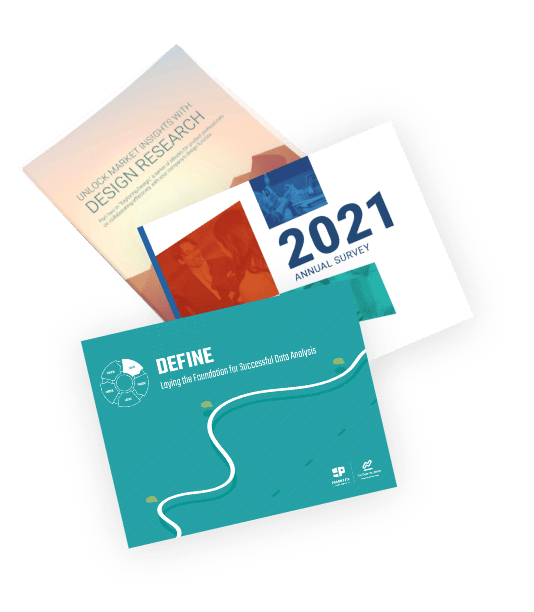One of our favorite sayings around Pragmatic Institute is this: “Your opinion, although interesting, is irrelevant.”
It reminds us that the answer to most of our questions lies not in our own opinions, but in the voice of the buyer. Leave the building and listen to the market, rather than sit around and just dream up stuff.
When I have quiet time in my life (a rarity!) one of my favorite pastimes is to read the works of Ralph Waldo Emerson. I won’t go into a discourse on Emerson and his writings. But it suffices to say he helps me to think deep thoughts (but in a slightly more productive way than Jack Handey!).
One of Emerson’s most famous essays is titled, “Self-Reliance.” A favorite passage from that essay reads:
“To believe your own thought, to believe that what is true for you in your private heart is true for all men—that is genius.”
Hold on! Emerson seems to be saying my opinion IS relevant! I am supposed to believe that what is true for me is true for all others! Who is right? Emerson or Pragmatic Institute?
The short answer is Both.
Here’s Why.
Pragmatic Institute is not saying that all your creative ideas are to be discarded just because they are yours. What we are saying is that you must have the discipline to use the Pragmatic Framework all the time, and especially when you dream up the idea yourself.
Following the Framework
Let’s imagine you are sitting on an airplane (again). You can’t use your laptop because the football player in front of you has his seat all the way back into your space (you are in coach, of course). Forrest Gump is playing, but on a screen the size of a box of chocolates five rows up. So you dial up some tunes on your iPod and try to relax.
Suddenly, it hits you like a sledgehammer! What our customers need is <insert your latest idea here>! In your head, all the pieces are suddenly coming together, and you realize that you’ve just come up with the next big thing for your product.
But wait. … Didn’t you learn from Pragmatic Institute to stifle your own opinions? No. What you learned was to follow the rigor of the Framework. So, let’s do that.
Step 1: Speak your opinion in problem statements
Think hard about your idea. Is it described as “add a spinning weasel to the bottom of the report writer wizard”? Or is it expressed as a problem statement, written in the voice of the buyer, about them and what is broken in their lives?
Write, rewrite, and rewrite again. This step is both critical and tough. We are all inherently feature-speakers. Learning to write in the voice of the buyer takes practice. Remember: No Fisher space pens!
Got a well-written problem statement? Keep going.
Step 2: Validation research on your opinion
Take your problem statement to a handful of folks in your market. Ask them if you’ve captured something that resonates with them. Ask them to compare and contrast the urgency of this problem with others that you already know they have.
This step is one of the hardest, because it is really tempting to “convince” buyers that you are correct. Be very careful here, and work hard to avoid injecting your own bias.
Does the problem resonate? Is it urgent? Keep going.
Step 3: Begin the collaborative process with Development
Combine your problem statement and the acid-test results from the market, then go grab a sandwich or a beer with your buddy in Development. Talk about the problem statement, but not about the features you would use to solve the problem. Let the creativity of your Engineering counterpart engage with the problem.
Listen. Is this a large project? Or something that can be blended into an existing project? If the expense to solve the problem seems reasonable, keep going.
Step 4: Get executive support before you spend any money
Write a business proposal, not a business case. Take no more than half a day to complete the proposal, and then submit it to your execs. A simple one-page summary that includes:
What is compelling about this market opportunity? What is the market segment? How big is the segment? Do you know the revenue potential?
What are the business problems? Are they urgent or critical? Why? If not urgent today, when will they become urgent? Are the problems pervasive? Are people willing to pay to solve the problems? Are the problems currently being solved or have you uncovered unmet needs? If there are current solutions, why should the company create another solution?
How does this opportunity leverage the company’s distinctive competence? How does this fit with corporate strategy?
Is the need driven by a technology shift? What are the technical issues or opportunities? Can you leverage technology you already have or can obtain?
Briefly describe the competitive landscape and what advantage you would have against the competition.
Describe the research you conducted.
Is the proposal consistent with company strategy? Does it seem like the proposal will generate profit? Keep going.
Step 5: Write the business case on your opinion
There are lots of pieces to this, and we won’t cover all the details here. But the simple version goes like this:
Get revenue estimates through market surveys or secondary research and combine them with “reasonableness tests” with your sales team.
Get cost estimates from Development for the project.
Get cost estimates from Marketing for the go-to-market expenses for the project.
Subtract costs from revenue to calculate profit.
Still looking good? Keep going…and going…and going (with apologies to the Energizer Bunny).
Prove You Are Wicked Smart
If your opinion is really a reflection of a flash of brilliance, you’ll be able to prove it using the Pragmatic Framework. If it is just your opinion, the rigor of the Framework will stop you before you step off a cliff.
So your opinion is irrelevant not because you are stupid, but because if you use solely your opinion to sway your leaders to invest, you put your organization at great risk. Emerson is right—you are wicked smart. Pragmatic is also right—listen to the market, without bias. If your idea matches a need in the market, then the market data will do the heavy lifting to prove you are wicked smart. It is your opinion without the data that is irrelevant.
Now, if we could just get that first-class upgrade …
Author
-
Jim Foxworthy is president of Pragmatic Institute and an industry veteran with more than 30 years in the computer industry. Prior to becoming president, Jim was an instructor for Pragmatic Institute and headed a consulting firm focused exclusively on implementations of the Pragmatic Institute Framework. Contact Jim at [email protected]








